- Home
- >
- Mutually exclusive events – Explanation & Examples
JUMP TO TOPIC
Mutually Exclusive events – Explanation & Examples
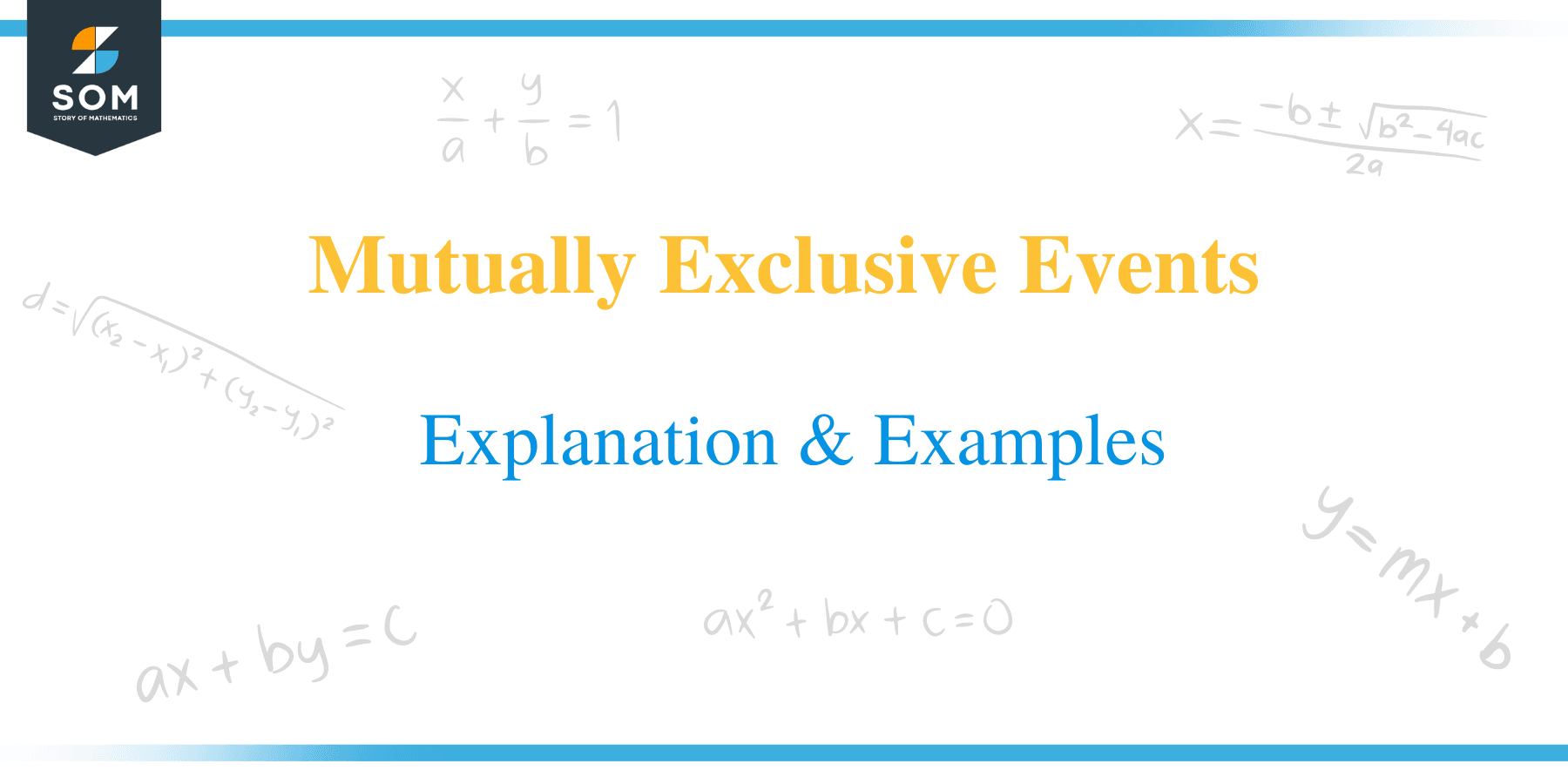 If two things are mutually exclusive, it means that they cannot co-exist at the same time. In statistics and probability, we use the term mutually exclusive events to define such events that cannot take place together.
If two things are mutually exclusive, it means that they cannot co-exist at the same time. In statistics and probability, we use the term mutually exclusive events to define such events that cannot take place together.
For instance, if we roll a die, then we can either get an even number or an odd number, but it is impossible to have an outcome that is both even and odd.
Similarly, let’s say we toss a coin three times. If we get an even number of Heads then we cannot get an even number of Tails and vice versa. Such events are examples of mutually exclusive events.
A collection of events is said to be mutually exclusive if only one of those events can take place at a time in a given experiment.
After reading this article, you should be able to understand the following:
- Mutually exclusive events
- Identify mutually exclusive events
- Calculate the probabilities of such events
It might be helpful to refresh the following topics:
What Is a Mutually Exclusive Event?
To understand the concept of mutually exclusive events, it will be helpful to first discuss what is a sample space.
Sample space:
A sample space is the collection of all possible outcomes. For example, when we roll a six-sided fair die, there are six possible outcomes, so the sample space is given as $\text{S}=\{1,2,3,4,5,6\}$. Any subset of the sample space is called an event. For example, let us consider $E1=\{2,4,6\}$, which is a subset of sample space $S $ and it contains only even numbers. Similarly, the event $E2 = \{2,3,5\}$ is a subset of $S$ and contains all the possible prime numbers in a six-sided die. Finally, let $E3 = \{1,3,5\}$ which is the event that an outcome is an odd number.
Now, if we roll a dice, $E1$ and $E3$ cannot take place together, i.e., if the outcome is a member of $E1$ (an even number), then the outcome cannot be a member of $E3$ (an odd number). However, $E1$ and $E2$ are not mutually exclusive because if the outcome is an even number, then there is one possibility that the outcome is also a prime (i.e., 2). So $E1$ and $E2$ can occur simultaneously. Similarly, $E2$ and $E3$ are not mutually exclusive since there are two possibilities (i.e., 3&5) that are a member of both $E2$ and $E3$ and hence $E2$ and $E3$ can occur simultaneously.
How to Tell If Two Events Are Mutually Exclusive
From the above discussion, we note that if two events have some members in common, then they are not mutually exclusive; however, if two events have nothing in common, then they are mutually exclusive.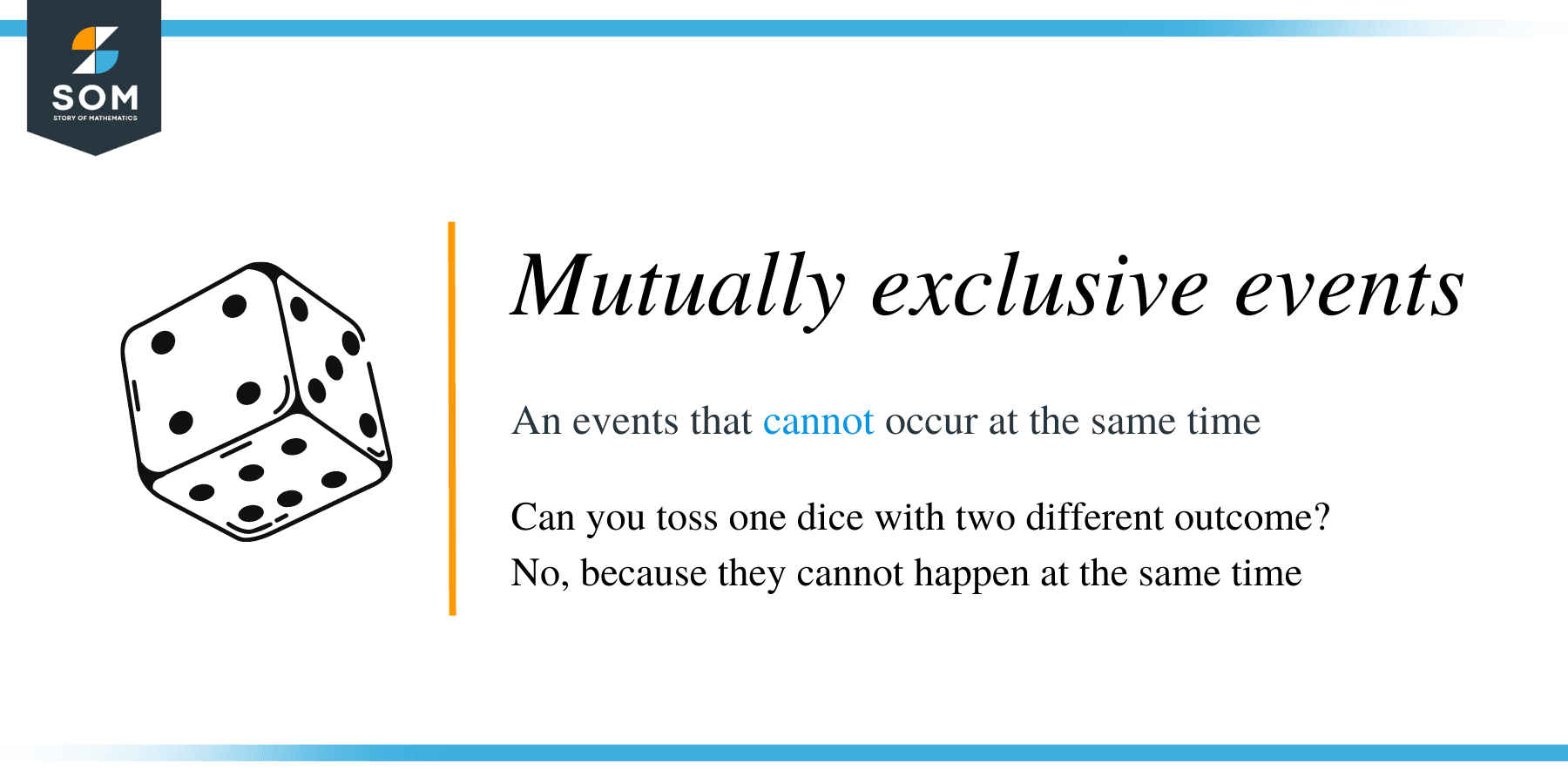
Remember from set theory that we use the “Intersection ($\cap$)” operation to find similar members in two sets. Hence, two events, $A$ and $B$ are said to be mutually exclusive if $A \cap B = \{\}$. Note that mutually exclusive events are also called disjoint sets.
Example 1:
We toss a coin three times. We define $E1=\textrm{Even number of Heads}$, $E2=\textrm{More Heads than Tails}$, and $E3=\textrm{Even number of Tails}$.
- Are $E1$ and $E2$ mutually exclusive?
- Are $E2$ and $E3$ mutually exclusive?
- Are $E3$ and $E1$ mutually exclusive?
Solution:
The sample space for three tosses is $S=\{HHH, HTH, HHT, THH, TTT, TTH, THT, HTT\}$
$E1=\textrm{Even number of Heads}=\{HTH, HHT, THH\}$.
$E2=\textrm{More Heads than Tails}=\{HHH, HTH, HHT, THH\}$.
$E3=\textrm{Even number of Tails}=\{TTH, THT, HTT\}$.
1. Are $E1$ and $E2$ mutually exclusive?
We know that for two events to be mutually exclusive their intersection must be an empty set. So
$E1\cap E2 =\{HHT, HTH, THH\}\neq\{\}$.
Hence $E1$ and $E2$ are not mutually exclusive events.
2. Are $E2$ and $E3$ mutually exclusive?
$E2\cap E3 =\{\}$.
Hence $E2$ and $E3$ are mutually exclusive events.
3. Are $E3$ and $E1$ mutually exclusive?
$E3\cap E1 =\{\}$.
Hence $E3$ and $E1$ are mutually exclusive events.
Example 2: We roll a dice twice, let us define Event $E1=\textrm{Sum is an even number }$, $E2=\textrm{Sum is greater than 10}$, and $E3=\textrm{One is even and one is odd}$.
- Are $E1$ and $E2$ mutually exclusive?
- Are $E2$ and $E3$ mutually exclusive?
- Are $E3$ and $E1$ mutually exclusive?
Solution:
The sample space for two dice rolls is:
$\{(1,1), (1,2), (1,3), (1,4), (1,5), (1,6),$
$(2,1), (2,2), (2,3), (2,4), (2,5), (2,6),$
$(3,1), (3,2), (3,3), (3,4), (3,5), (3,6),$
$(4,1), (4,2), (4,3), (4,4), (4,5), (4,6),$
$(5,1), (5,2), (5,3), (5,4), (5,5), (5,6),$
$(6,1), (6,2), (6,3), (6,4), (6,5), (6,6)\}$.
$E1=\textrm{Sum is an even number}=\{(1,1), (1,3), (1,5), (2,2), (2,4),(2,6), (3,1), (3,3), (3,5), (4,2),$
$(4,4),(4,6), (5,1), (5,3), (5,5), (6,2), (6,4),(6,6)\}$.
$E2=\textrm{Sum is greater than 10}=\{(5,6), (6,5), (6,6)\}$.
$E3=\textrm{One is even and one is odd}=\{(1,2), (1,4), (1,6), (2,1), (2,3), (2,5),(3,2), (3,4), (3,6),$
$(4,1), (4,3), (4,5),(5,2), (5,4), (5,6), (6,1), (6,3),(6,5)\}$.
1. Are $E1$ and $E2$ mutually exclusive?
$E1\cap E2 =\{(6,6)\}\neq\{\}$.
Hence $E1$ and $E2$ are not mutually exclusive events.
2. Are $E2$ and $E3$ mutually exclusive?
$E2\cap E3 =\{(5,6), (6.5)\}\neq\{\}$.
Hence $E2$ and $E3$ are not mutually exclusive events.
3. Are $E3$ and $E1$ mutually exclusive?
$E3\cap E1 =\{\}$.
Hence $E3$ and $E1$ are mutually exclusive events.
Venn diagrams
Venn diagrams are a useful tool to visualize the concepts of sample space and events. Let’s draw some Venn diagrams to better understand the concept of mutually exclusive events. Let’s suppose we have two events A and B. We know that an event is the subset of a sample space, so we draw the Venn diagram for event A as follows:

Now, if we want to draw a Venn diagram containing both A and B, there are two possibilities.
- A and B share some members.
- A and B do not share any members.
The Venn diagrams for these two possibilities are drawn below. When A and B do not share any members, then the Venn diagram corresponds to the mutually exclusive events.

Example 3:
We reconsider the example of a roll of a die discussed above. Suppose we roll a six-sided fair die. Let $E1 = \textrm{Outcome is Even}$, $E2 = \textrm{Outcome is Odd}$, and $E3 = \textrm{Outcome is Prime}$. Draw a Venn Diagram corresponding to these three events and identify mutually exclusive events.
Solution:
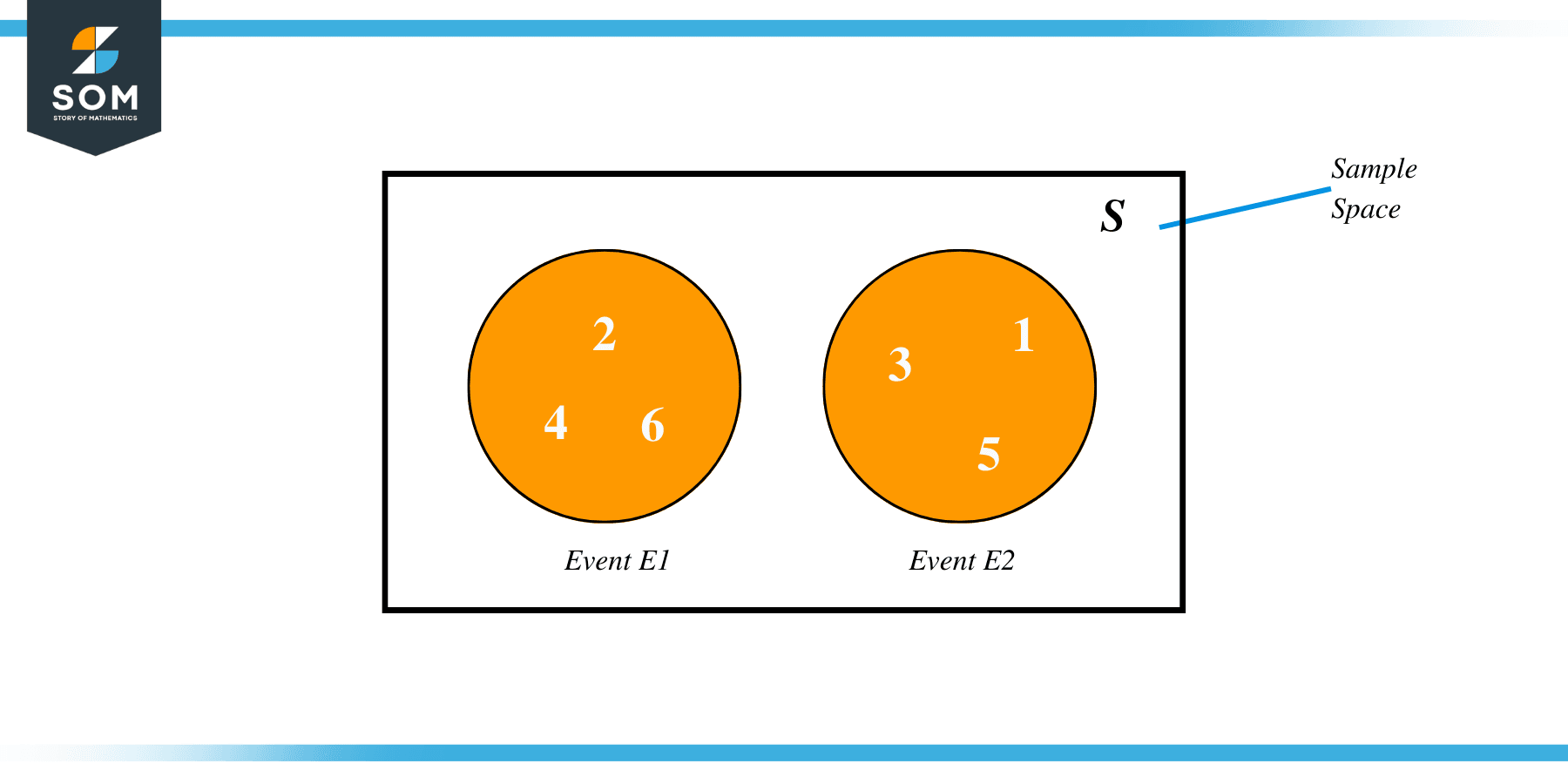
We note from the Venn diagram that $E1$ and $E2$ do not overlap and hence are mutually exclusive.
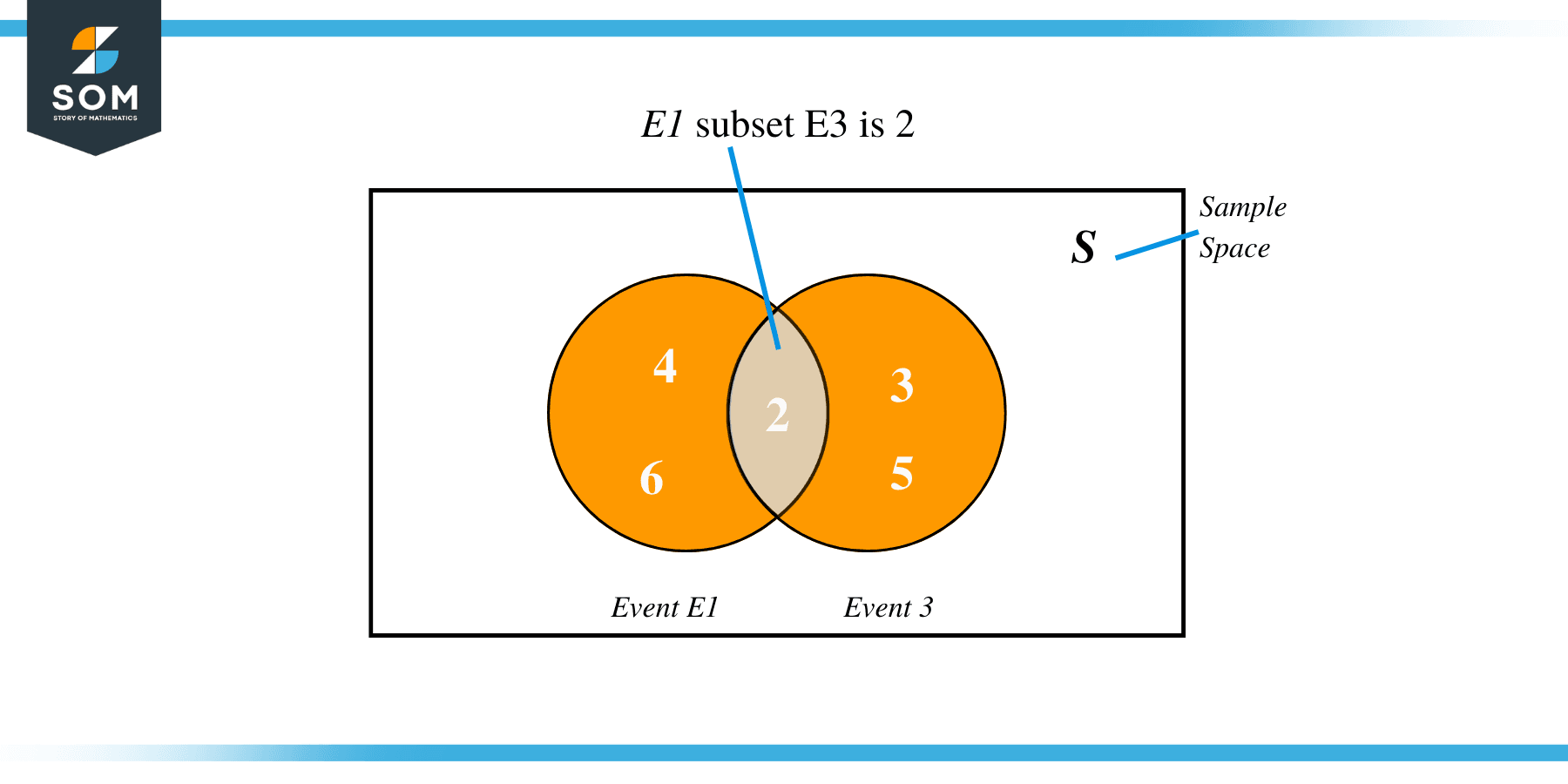
We note from the Venn diagram that $E1$ and $E3$ do overlap and hence are NOT mutually exclusive.

Again, we note from the Venn diagram that $E2$ and $E3$ share an overlapping region and hence are NOT mutually exclusive.
Mutually Exclusive Events Definition
A collection of events is said to be mutually exclusive if only one of those events can take place at a time in a given experiment.
From the perspective of probability theory, two events $E1$ and $E2$ are said to be mutually exclusive if
$E1 \cap E2 = \{\}$
Mutually Exclusive Events Formula
Now that we understand what mutually exclusive events are and how to identify them, we discuss how to calculate probabilities of mutually exclusive events. Let $A$ and $B$ are arbitrary events. We are usually interested in three different probabilities associated with any two given events.
- Probability of $A$ AND $B$, i.e., $P(A\cap B)$.
- Probability of $A$ OR $B$, i.e., $P(A\cup B)$.
- Probability of $A$ given $B$, i.e., $P(A|B)$.
If $A$ and $B$ are mutually exclusive then $A \cap B = \{\}$; therefore,
$P(A \cap B) = 0$
Remember from basic set theory that for any two events $A$ and $B$, $P(A \cup B) = P(A) + P(B) – P(A \cap B)$. Since, $P(A \cap B) = 0$, if $A$ and $B$ are mutually exclusive, hence
$P(A \cup B) = P(A) + P(B)$
Finally, from the definition of conditional probability, we know that
$P(A|B) = \frac{P(A \cap B)}{P(B)}$. So if $A$ and $B$ are mutually exclusive then
$P(A|B) = P(B|A) = 0$
Example 4:
Suppose we have a bucket that contains 2 Red balls and 3 Green balls. We randomly draw two balls out from the bucket without replacement. Let $E1$ be the event that the first ball is Red. Let $E2$ be the event that the second ball is Red. Answer the following questions:
- Are the events $E1$ and $E2$ mutually exclusive?
- What is the probability of $E1$ OR $E2$?
- What is the probability that the second ball is Red given that the first ball is Red, i.e. $P(E2|E1)$?
Solution
1)
Since there is only one Red ball so $P(E1 \cap E2) = P(\textrm{1st Ball is Red AND 2nd Ball is Red})=0$, hence $E1$ and $E2$ are mutually exclusive.
2)
Since $E1$ and $E2$ are mutually exclusive so $P(E1 \,\textrm{OR}\, E2) = P(E1 \cup E2) = P(E1) + P(E2)$. To find $P(E1)$ and $P(E2)$, we draw a tree diagram as shown below.
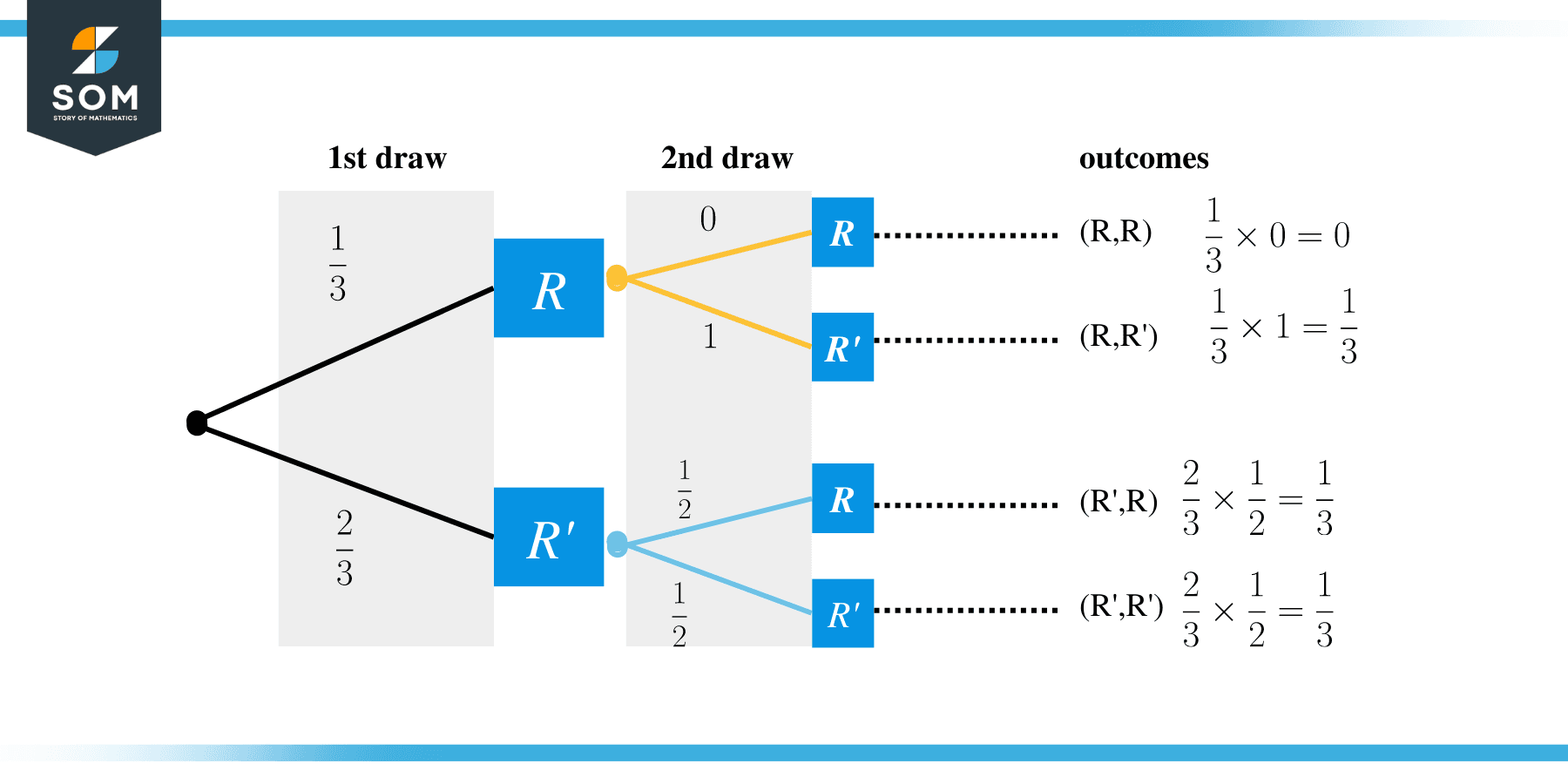
Remember that probabilities are multiplied along the branches of the tree diagram, so $P(E1) = P(R,R’) = \frac13$ and $P(E2) = P(R’,R) = \frac13$. Finally, $P(E1 \,\textrm{OR}\, E2) = \frac23$.
3)
From the definition of conditional probability, we note that
$P(E1|E2) = \frac{P(E1 \cap E2)}{P(E2)}$.
As, $P(E1 \cap E2) =0$, therefore, $P(E1|E2) = 0$.
Example 5:
In a football match between Team A and Team B, the probability that Team A will score one goal is $20$% and the probability that Team A will score more than one goal is $5$%. What is the probability that Team A will at least score a single goal?
Solution:
Let $E1$ be the event that Team A scores one goal. Let $E2$ be the event that Team A scores more than one goal. Note that $E1$ and $E2$ cannot take place simultaneously and hence are mutually exclusive. The probability that Team A scores at least one goal is $P(E1\, \textrm{OR}\, E2)$ and is given as
$P(E1 \,\textrm{OR}\, E2) = P(E1 \cup E2) = P(E1) + P(E2) – P(E1 \cap E2)$.
Since $E1$ and $E2$ are mutually exclusive, hence $P(E1 \cap E2) = 0$, therefore
$P(E1 \, \textrm{OR} \, E2) = 0.2 + 0.05 = 0.25 = 25\%$.
Practice Questions:
1.We roll a dice twice. Let $E1$ be the event that the sum of the two outcomes is a prime number. Let $E2$ be the event that both outcomes are the same and $E3$ be the event that the sum of the outcomes is an even number.
a) Are $E1$ and $E2$ mutually exclusive?
b) Are $E2$ and $E3$ mutually exclusive?
c) Are $E1$ and $E3$ mutually exclusive?
2.We draw a card from a deck of 52 cards. Let $E1$ be the event that the first card is a King. Let $E2$ be the event that the first card is a Queen. Let $E3$ be the event that the first card is a spade.
a)Are $E1$ and $E2$ mutually exclusive?
b) Are $E2$ and $E3$ mutually exclusive?
c) Are $E3$ and $E1$ mutually exclusive?
3. Two events $E1$ and $E2$ are said to be independent if $P(E1 \cap E2) = P(E1)\times P(E2)$. Is it possible that two events are independent and mutually exclusive at the same time?
4. In a football match between Team A and Team B, the probability that Team A will score one goal is $10$% and the probability that Team A will score more than one goal is $5$%. What is the probability that Team A will not score a single goal?
Answer Key
1.
a) No
b) No
c)Yes
2.
a) Yes
b) No
c) No
3. No
4. 85%
